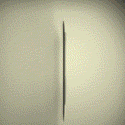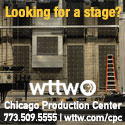
Downtown Chicago turned into a sea of hand-lettered signs, drums, and inflatable costumes on Saturday as many as 250,000 people flooded the Loop for the second nationwide “No Kings” protest, far eclipsing June’s estimated 75,000 turnout.
By early afternoon, the march stretched roughly two miles, snaking from Butler Field in Grant Park up Michigan Avenue to Wacker Drive, then looping back south along Clark and Jackson.
Organizers from the local Indivisible coalition pegged the crowd at a quarter-million; Chicago Police declined to provide an official estimate but confirmed there were no arrests connected to the rally or the march. The event unfolded peacefully despite heavy congestion on rail lines into the city and lifted river bridges for fall boat runs that snarled streets before noon.
The day began at the Petrillo Music Shell, where Gov. JB Pritzker and Mayor Brandon Johnson addressed a shoulder-to-shoulder crowd that spilled across Jackson Drive toward Buckingham Fountain. Pritzker framed the demonstration as a constitutional stand in the face of “law and order” justifications for sweeping enforcement.
“Black and Brown people are being targeted for the color of their skin,” he said to chants of “U-S-A!” “These people are the fabric of our society.” Johnson urged unity and a general strike. “We will not bend. We will not cower… when the people are united, justice always prevails.”
After 1 p.m., thousands poured onto Michigan Avenue, at times filling both sides of the Mag Mile median before pausing opposite Trump Tower. The route then returned to Grant Park in a steady, marshaled flow. CPD bike teams lined intersections and, alongside trained safety marshals, guided marchers along the shifting route after some initial confusion near Michigan and Jackson.
The mood mixed pageantry and purpose. A 75-foot replica of the U.S. Constitution moved through the canyon of downtown, flanked by American flags, some flown upside-down as a distress signal. Whistles and drumlines kept cadence. Protesters wore inflatable suits, unicorns, dinosaurs, and axolotls, adding levity to a day aimed squarely at serious policy concerns. One group toted an ICE-agent piñata; others handed out zines titled “Why Escalation?” arguing for more disruptive tactics rooted in historical movements.
The local backdrop sharpened the stakes: federal enforcement actions, ICE’s “Midway Blitz” and CBP’s “At Large” have rolled through Chicago and the suburbs for weeks, with more than 1,000 arrests cited by a former ICE field director. That, plus legal wrangling over a potential National Guard deployment (blocked for now by federal courts), drew many who said they were marching for neighbors too afraid to appear.
Indivisible organizers pledged a peaceful protest, and by late afternoon, the crowds returned to Butler Field, where smaller clusters kept up the beat.
Republican leaders, who had previewed the day as a “Hate America” rally, were largely quiet as the marches unfolded nationwide. From Mar-a-Lago, President Trump dismissed the monarch framing, “I’m not a king,” he told Fox News.
At the same time, critics on the ground in Chicago leaned into the movement’s title, insisting that Saturday was about the opposite: civic power, peacefully expressed, in a city determined to be heard.
ALSO READ:
Don Lemon zeroes in on ICE arrests, and Chicago’s pushback


















